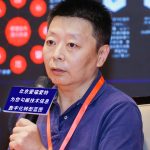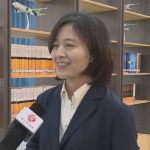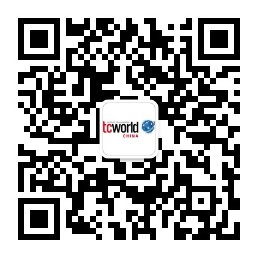Download the latest tcworld China 2020 Program in the PDF format.



I will explore different approaches to eliminating paper-based labels and discuss the transition from digital nameplates to more advanced concepts such as the Digital Product Passport and the Asset Administration Shell in the context of Industry 4.0.
Join me to discover how these innovations contribute to a more sustainable, efficient, and future-proof industrial landscape.



Requirement Phase: user research, competitor insights, scenario-based task sequencing, on-site task validation and optimization, and sorting out of scenario-based requirements
2. Design Exploration of Design-Assets-Oriented Positive Design to Improve Original Content Quality
Development Phase: accumulation and empowerment of design assets (information design guidelines, positive and negative case studies), template-guided design development (architecture templates, content templates), and quality control of the design process (material input review, document output review).
3. Text Quality Metrics System Construction and Content Measurement Practice
Requirement Validation Phase: text quality metrics system building, content quality measurement methods, and summative testing activities of ducumentation — guiding requirement validation and closing the loop.





The key topics covered include:
Analysis of pain points in traditional static documentation under complex operational scenarios.
Cutting-edge applications of AI in interactive documentation, such as virtual training and AR-based maintenance manuals.
The process of designing and implementing interactive documentation, including technical recommendations and insights for developers.
This presentation aims to demonstrate the value of AR/VR technologies in enhancing documentation interactivity through real-world case studies and practical experiences.

Good prompt engineering is key for generating novel texts and making these fit into a company's language. When working with LLMs for proofreading, the quality of a good prompt and the provided additional material is getting even more critical to achieve the results that are expected. During the presentation, Thomas will provide an outline of what makes good input-data good and how to use the available data to make a Large Language Model an efficient proofreader that provides valuable insights. Using a human-in-the-loop approach, the LLM provides both an increased efficiency and also the required quality.


Participants will engage in writing simulations, group discussions, and case analyses to learn the core rules of ASD-STE100, along with key challenges, common pitfalls, and often-overlooked aspects of technical writing.
Whether you’re a novice or an experienced professional, this boot camp will help broaden your career opportunities.

LLMs enhance localization efficiency and quality in multiple ways. In machine translation and post-editing (MTPE), they significantly improve accuracy and fluency, reducing turnaround time. In terminology extraction and management, LLMs can automatically identify and standardize multilingual terms to ensure consistency. Additionally, they excel in localizing multimedia and marketing content, generating culturally adapted materials that support global business development.
Despite their advantages, LLMs also pose challenges such as data security, translation quality, and cultural adaptation. To address the issues, localization companies should enhance data privacy measures by considering private models or on-premise deployment to ensure data security. Meanwhile, the companies should also combine LLM outputs with human review to improve cultural relevance. Small and medium-sized businesses can leverage cloud-based LLM APIs to access advanced capabilities at a lower cost.
Looking ahead, LLMs will become more tailored and deeply integrated into localization workflows, enabling more efficient human-AI collaboration and enhancing globalization.

1)Providing outlines and text polishing in the initial stage of documentation writing;
2)Quickly and intelligently extracting key parameters for repetitive and complex documents;
3)Inspecting content with AI to rapidly verify document compliance with standards and check for typos, formatting, and terminology;
4)Translating and converting documents into multiple languages;
5)Implementing intelligent Q&A based on internal terminology and a knowledge base formed from technical documents in terms of documentation application.
To reduce the unpredictability of AI-generated content, Hikvision has implemented fine-tuning training and built small models for proprietary domains to enhance the reliability of generated content. This documentation application can be extended to all Hikvision subsidiaries and significantly improve the writing efficiency and quality of operational manuals, user guides, troubleshooting manuals, and more.


Everyone can initiate topics, join discussions, and switch groups freely. How to participate?
- Post the subject on the "Inspiration Wall"
- Join a discussion group
- Speak, listen, or switch groups anytime
Want to start a discussion? You don't need to be an expert. All you need is just a question or an idea!
Let’s break the boundaries of traditional conferences and spark genuine communication.
Unconference is waiting for you!



However, the role of AI is not without limitations. While AI can enhance efficiency and accuracy, it lacks the nuanced understanding of context, tone, and emotional intelligence that human writers possess. AI-generated content can sometimes be formulaic and may miss the subtlety and depth required for engaging technical documentation.
To better serve customers and meet evolving needs, future tech writers must develop skills in AI literacy, data analysis, and user experience design. Understanding how to leverage AI tools effectively and interpreting data-driven insights will be crucial. Moreover, tech writers should hone their ability to empathize with users, ensuring that the content they create is not only technically accurate but also user-centric and accessible.

The speaker will share insights and experiences gained from the practices, hoping to inspire participants with similar requirements.



1. Introduction: Challenges and Opportunities for Enterprises Going Global
2. Digital Transformation: Building the Foundation for Overseas Expansion
3. Intelligent Upgrades: Empowering Enterprises to Take off in Overseas Markets
4. Digital Communication: Crafting a Global Brand for Overseas Expansion



In this presentation, you will learn about the innovative technologies of Digital Data Chain: the use of ID Link and its linked metadata-rich equipment information to form standard document containers, which can then be delivered, shared, and used through a variety of means, including information exchange platforms (IEP), to achieve a higher degree of automation throughout the whole process. These technologies are also an important part of Industry 4.0 and digital twins and the basis for the realization of digital and intelligent plants.

How to Create User Journey Maps:
1. Key components of user journey maps
2. How to incorporate key components into user journey maps
3. Methods and tools for designing effective user journey maps
Integrating User Journey Maps with After-Sales Manuals:
1. Enhances manual content based on user journey maps
2. Optimizes the presentation of manuals guided by user journey maps
Case Studies:
Presents one or two case studies to demonstrate the steps and highlights of creating user journey maps
Implementation Steps and Considerations:
1. Summarizes the implementation process for integrating user journey maps with manuals
2. Highlights common mistakes and precautions
3. Evaluates the effectiveness of user journey maps

By 2024, the Xiaohai team tackled these issues by developing an automatically updatable data foundation, a new generation Q&A technology framework, and a data flywheel solution. These improvements led to fully automated language data management, 100% coverage of scenarios, and an 85% accuracy rate of knowledge-based answers in user plane storage systems.





Structured Format Conversion: uConverter
uConverter is available in both the chatbot and cloud document plugins. It enables users to convert unstructured content into DITA-structured content effortlessly by selecting the unstructured material and specifying the topic type. With a simple click, the content is converted. Another click allows for the converted content to be swiftly sent to the structured content platform. This feature notably decreases the amount of time technical writers spend on copy-paste activities.
Intelligent Translation: uTranslator
uTranslator is not only available in chatbot and cloud document plugins but can also be used in web interfaces and professional technical documentation editors like Oxygen. After users sending the content to a large language model for pre-translation, the company’s terminology and memory databases will replace any matched content that needs updating, generating a translation that meets the standards of professional domains. In Oxygen, users can translate while writing, and on the web, users can utilize terminology and memory databases for multi-format document translation.
Document Quality Inspection: uChecker
Integrated into the Oxygen editor, this feature allows users to perform quality checks with only one click after completing content writing. uChecker incorporates the company’s writing standards, helps with punctuation, spacing, measurement units, and non-standard terminology checks and provides modification suggestions. By integrating quality checks into the writing process and delegating tedious inspection tasks to uChecker, technical writers is enabled to write and check simultaneously.

This presentation, based on knowledge engineering, comprehensively enhances the strategic value of knowledge management in the AI era. The speaker will share the content development practices based on knowledge engineering with real cases, including the following aspects:
1. Based on knowledge system modeling experience in daily research and development process, as well as the standardized path of knowledge engineering construction.
2. The full-link practice of building a knowledge engineering pipeline from scratch and optimizing the document delivery process, demonstrating how knowledge engineering is deeply integrated with AI to provide systematic support for content standardization, management efficiency, and intelligent generation.
3. Revealing the key role of knowledge management in the promotion of intelligent content delivery, model training, and the application of Agents/AI, and empowering the industry to explore new perspectives and practical paths.
Through these sharing sessions, this presentation will provide highly practical solutions for the fields of technical communication and knowledge management.



1. From 0 to 1 - The Birth of Intelligent Customer Service: comprehensively analyzes the behind-the-scenes story of a small team building an intelligent customer service system from scratch, and reveals the key steps and considerations in the building process.
2. AI x Technical Documentation: explores how AI and technical documentation blend in a fascinating way, and delves into the amazing cross-document integration that can piece together scattered information into a complete knowledge chain; utilizes flexible information extraction techniques to accurately capture the details users need.
3. AI Fills the Technical Gap: focuses on the key role of AI, which functions as an "all-purpose patch" in the tech field, in technical content development. For example, in term management, AI can improve the comprehensibility and consistency of documents; it can also enhance the cooperation efficiency between technical writers and R&D personnel by adding code instructions.
4. The "Treasure Trove" of Enterprise Knowledge Assets: how to leverage AI to uncover a "knowledge goldmine" from a large number of customer support communication records to build an enterprise knowledge base, which provides strong support for internal personnel to solve problems, and makes the technical content richer, diverse, authoritative and reliable, thus fully meeting the needs of both customers and enterprises.
-150x150.jpg)
How does maintenance engineering analysis relate to the technical documentation system? How can we build an effective maintenance engineering analysis ecosystem?
How are configuration or technical status changes (e.g., BOM updates) linked to technical documentation? How do applicability and validity in documentation reflect these changes?

The TikTok channel aims to connect with a niche audience in Indonesia who are passionate about China, using relatable stories and practical communication tips. Through authentic storytelling and firsthand experiences, the content highlights challenges and rewards of learning Mandarin and immersing in Chinese society. These stories serve as a bridge, providing viewers with a deeper understanding of Chinese culture, societal norms, and everyday interactions, while emphasizing the importance of language as a tool for connection.
As viewers engage with the content, they are encouraged to join a growing community focused on Mandarin learning. By presenting language in context and providing real-life examples, the account motivates Indonesians to take an active interest in learning Mandarin. The interactive nature of TikTok allows for constant engagement, making learning fun and accessible, and developing a sense of belonging among those passionate about Chinese language and culture.
In just two months, the TikTok channel has gained over 20,000 followers and accumulated more than 11 million views. This rapid growth is not only a testament to the appeal of the content but also its ability to engage viewers and spark interest in Mandarin learning. As a result, more than 20 private Mandarin sessions have been conducted, demonstrating the tangible impact of the contents on language acquisition. These sessions reflect the growing demand for personalized language instruction, with many viewers seeking to deepen their knowledge after being inspired by the content.
This presentation highlights the potential of TikTok as a powerful platform for cultural exchange, illustrating how personal experiences can inspire language learning and bring together communities with shared interests. Through relevant content, the channel hope to have lasting impact on language acquisition and cross-cultural understanding, bridging the gap between Indonesia and China.



Aligned with the national need for collaborative training of foreign-related legal talents, the course "Foreign-related Legal Translation and Technical Writing" is designed to prepare students to proficiently manage the translation and drafting tasks of common legal documents. Students will also be taught to leverage modern document visualization and digitization technologies, particularly graphics, charts, and data visualization techniques, to present complex legal information clearly and concisely. This approach enhance their capacity to effectively utilize modern technology in practical settings, thereby enhancing their competitiveness in the job market.
This presentation will focus on systematic course planning and practical case studies. By analyzing actual cases such as international contracts, legal opinions, and arbitration awards, and incorporating in-depth applications of translation and writing tools, this presentation aims to provide innovative solutions for legal practitioners and business users, highlighting the significance of technical communication in foreign-related legal practices.



Robert Connor’s 1982 seminal work on the history of technical writing instruction in American colleges and universities informs us that technical writing instruction in the US is closely related to engineering education from its beginning. By 1900, engineering schools recognized the critical need of their students for the knowledge of the writing demands for the engineering profession. So, technically speaking, it was within these engineering schools that the courses we now know as technical writing began. However, technical writing has not been offered as a standalone subject to undergraduate engineering students in China.
Upon arrival on US campuses, senior Chinese engineering students were appalled that they were required to take a technical writing class offered by the English Department as part of their engineering curriculum. This panel presentation invites one Chinese engineering professor with study and working experiences in both China and the US, three Chinese engineering students who studied in China and the US to talk about their initial exposure to technical writing instruction, their application of technical writing guidelines in engineering contexts, and their insights on the connection between technical writing and engineering education. The panelists will report how they engaged with an assignment in a technical writing class in the fall of 2024. The assignment asked the students to “retell” the history of technical writing instruction in American colleges as they have read from Connor’s article to their chosen Chinese audience, for example, parents, professors, and former classmates. These students’ final deliverables demonstrate that with formal instruction, they can quickly apply fundamental technical writing principles, such as audience analysis, document design, and clear organization of complex information, into practice.
The panelists will interact with conference participants to explore how technical writing instruction can better serve engineering students.



In teaching design, these intelligent agents leverage technologies such as natural language processing (NLP), retrieval-augmented generation (RAG), dynamic knowledge graphs, and sentiment analysis to support case generation and precise teaching scenario design. This significantly improves the efficiency and effectiveness of translation education. The agents can assess translation quality dynamically and provide personalized feedback, helping students master specialized terminology, understanding cultural metaphors, and enhancing cross-cultural communication skills. In technical communication, these agents combine multimodal generation technologies (e.g., 3D visualization, voice-based retrieval, and sentiment analysis) to create dynamic, scenario-specific technical manuals, making knowledge dissemination more precise, engaging, and efficient.
The presentation highlights real-world applications, showcasing how digital human intelligent agents leverage scenario recognition to simulate real usage environments, enable voice-triggered dynamic knowledge retrieval, and generate comprehensive solutions. It also explores the future of intelligent technical manuals through multiple intelligent agents collaboration and information fusion. Looking ahead, through multimodal integration and intelligent collaboration, digital human intelligent agents are expected to drive a fully integrated smart ecosystem in technical translation and communication, offering forward-thinking guidance for industry development.

Then, the presentation will focus on the role of AI in empowering the growth of newcomers in technical writing, encompassing both personal and document-related aspects.
For the personal aspect, I will discuss how I utilized AI to assist in creating my personal website which serves as a platform for me, a new TCer, to showcase works and enhance personal influence. (Visit my personal website: https://lishanlan.com/folio2/index.html.)
For the document-related aspect, I will share my experience of using AI to explore automated documentation workflows. This exploration was motivated by the real challenges encountered during my internships: how can document teams with multiple language requirements and frequent updates keep documents synchronized across various languages with limited human resources? Previously, due to constraints in human resources and costs, teams may have had to sacrifice the quality and timeliness of documents in some languages. However, with the emergence of AI agents, leveraging AI to automate the synchronization of multilingual documents has become feasible. This will be the central focus of this segment of the presentation.
The premier gathering event for all decision-makers and specialists in the field of technical communication in China.
WeChat Official Account:
